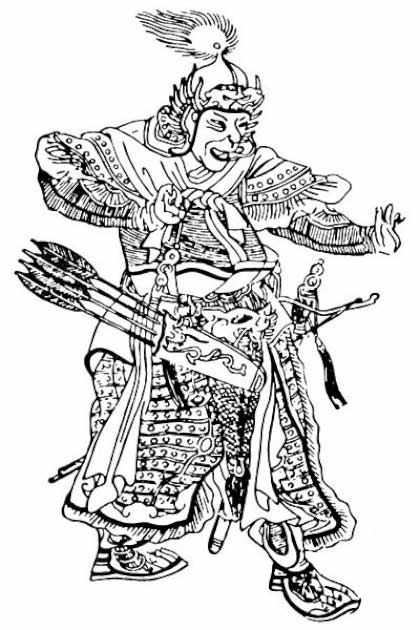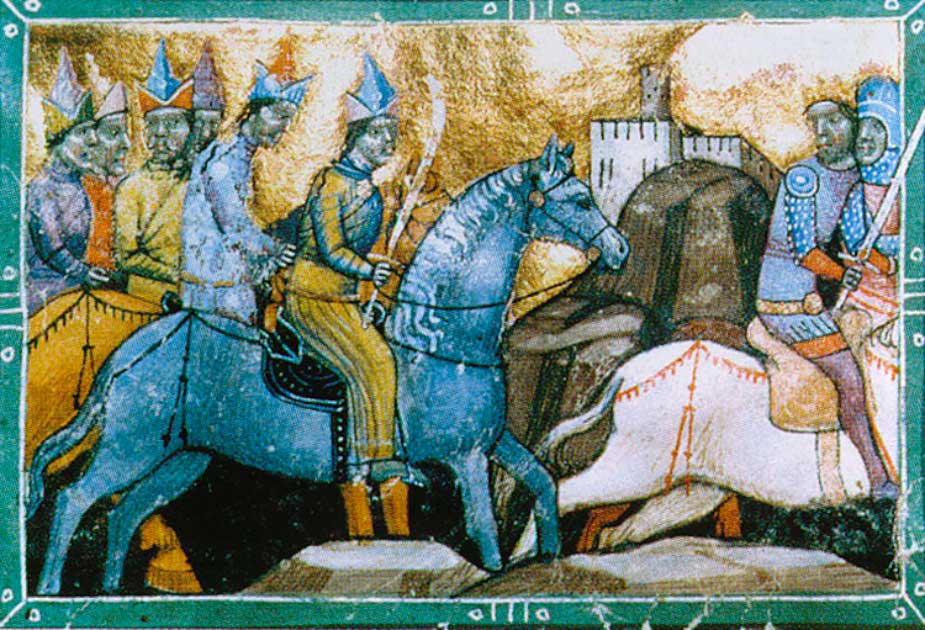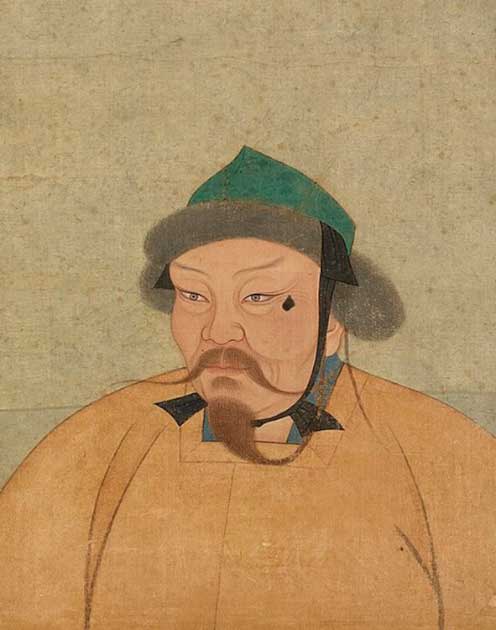The Battle of Mohi, also known as the Battle of the Sajo River or the Battle of the Tisza River happened on 11th April 1241. It was a large battle between the Mongol Empire and the Kingdom of Hungary. The Mongols had pushed westwards all the way to Europe, bringing fire, sword and destruction.
The Hungarians fled before the Mongols spread the news of the horror that came from the East. However, the Mongols never pushed on. Why was this? And how did the battle occur?
The Mongol Invasion of Europe
The Mongols had planned for their invasion extensively, approaching from the east with no fewer than five armies. Two of these attacked through Poland to prevent any troops from supporting the Hungarians, who were the main targets of the Mongols.
Bela IV of Hungary had cousins in Poland who would come to his aid if he requested it, but it was not to be. The two Mongol armies were successful and defeated the army of Henry II the Pious of Silesia at Legnica.

Another army of the Mongols attacked Transylvania crushing the Transylvanian armies. This left the main army, led by Khan Batu and Subutai, great general of the Mongol army, free to attack. They duly did so, crossing the Verecke Pass and falling on the Hungarians.
The first army they came up against was led by Denis Tomaj who was the palatinate count, which was the highest-ranking office in the Kingdom of Hungary. This army, followed by another under King Bela attempted to place natural borders to stop the Mongols.
They did not anticipate that the Mongols would be able to move with great rapidity through these barriers and were back on the march within three days. European contemporary records say that the Mongols advanced like lightning and did not allow the Hungarians to prepare for the battle ahead.
Hungarian Preparation
In 1223, fifteen years earlier, the ever-expanding Mongol Empire had defeated a group of semi-allied Rus city-states known as the Cumans along the Kalka River of eastern Europe. They used a tactic known now as the feigned retreat that became famous under Subutai.
- Were There Any Victors at the Battle of Clontarf?
- Genghis Khan Facts – 5 Interesting Details That May Surprise You
The survivors of this devastating defeat fled to Hungary where they were met a new problem Bela IV, who wanted them to convert to Christianity. Some of them were converted and accepted Hungarian rule. This move caused the Mongol eyes to turn on Hungary who saw the acceptance of these refugees as an act of war.
At this time, Hungary was in the throes of a political divide. Bela IV, upon ascending to the throne, began to execute and expel the advisors of the previous regime. This caused the nobles to become disaffected. They were further frustrated by the Cumans being accepted. They gave the king more power but caused friction across Hungarian society.
King Bela began to mobilize his army which included the Cumans, assembling in the city of Pest. He also relied on help from Frederick II, the Duke of Austria. However, the tensions between the Cumans and Hungarians flared up and caused riots within the forces.
Within these riots, the Cuman leader was killed. Some sources speculate that the Duke of Austria was instrumental in beginning the riots. The Cumans feeling betrayed left Hungary and moved south pillaging towns and cities on the way.
The full mobilization of troops was not successful as many of the troops were prevented from reaching Pest either by Mongols or Cumans. Also, many nobles, still unsatisfied with the rule of King Bela IV, refused the call to arms.
The Battle of Mohi
The Mongols reached the walls of Pest on the 15th march and began pillaging and dismantling the neighboring area. Bela was still unprepared and so forbade any men from attacking. Despite this, Frederick attacked and defeated a small raiding party.

Buoyed by this victory, he declared Bela a coward and returned home after his “heroic” success. The Mongols however continued to prevent any reinforcements from arriving and they won many victories isolating King Bela IV from the rest of his support.
Being forced to it, King Bela IV offered battle to the Mongols. Surprisingly, the Mongols retreated which allowed the nobles to believe that the king was a coward rather than cautious. The Hungarians chased the Mongols for a week being beset by Mongol forces and on an intensive forced march, the Hungarians finally reached the river Sajo.
- The Legend of Miloš Obilić: Did He Assassinate a Sultan?
- Tomb of Genghis Khan – Where is the Mongol Emperor Buried?
There are no firm reports to give numbers for the armies, but some reports claim to say the Hungarians lost 10,000 men which may have been the entire size of their army. It was estimated that they would have had a sizeable force. The Mongol sources claimed that they were outnumbered but this is unlikely.
The initial phase of the battle was fought around the Sajo bridge. The Hungarians arrived in the evening. The Mongols likely did not want to attack, famously the Mongol horse archers avoided night battles, and the Hungarians were able to defend the bridge. They went as far as to have an initial victory defeating the Mongols. However, this was not to last.
The Mongols attacked in the morning and forced a retreat from the Hungarians. By the afternoon, they had withdrawn into a defensive circle and were being besieged by the Mongols in their camp. At one point it looked as if they would be able to hold on but were unable to sally forward and break the attack.
Additionally, they were terrified of the flaming arrows. It was not long later that the Hungarians broke and were chased by the Mongols. Though the Mongols were not without their own losses. So much so that they did not give chase for long.
After the Victory
The Mongols regrouped in the initial aftermath of the battle and began to systematically tear down the Hungarian nation. The losses were large, and the Hungarians were unable to mount a successful defense.

The Hungarians were saved by the fact that on the 11th of December 1241, the Mongol ruler Ogedei died causing all Mongols to return to Mongolia so that they could be present to elect a new leader. If he had lived longer, who knows how far into Europe the Mongol army could have ushed.
The battle of Mohi marked a terrifying time for European nations who thought the Mongols could invade further. It cost the Mongols significantly though. In Russia, a large cemetery was dedicated solely to the Mongol troops killed in Hungary during this campaign.
Top Image: The Battle of Mohi: The Hungarians and Mongols clash across the bridge of the Sajo river. Source: Unknown Author / Public Domain.
By Kurt Readman